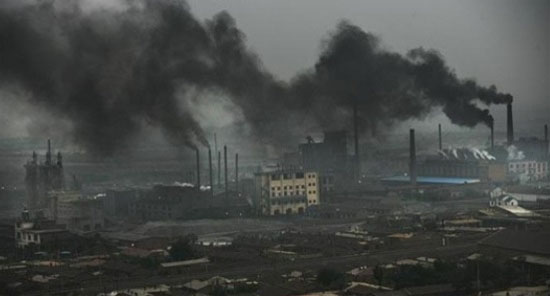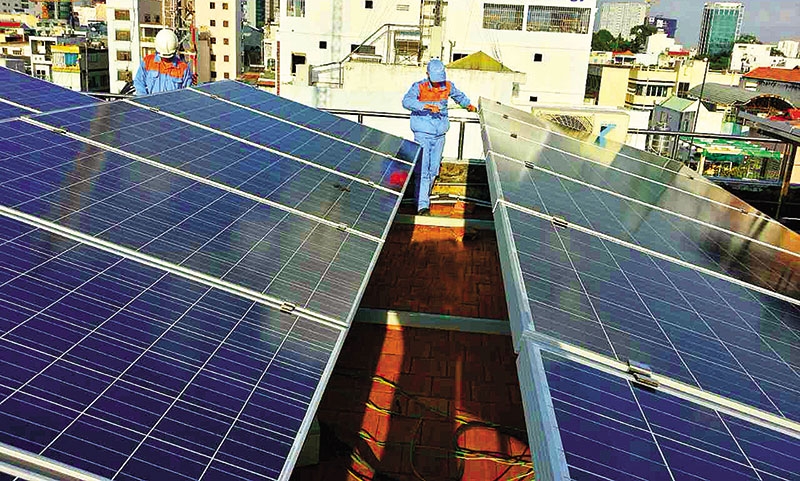
If one of the benefits of reducing air pollution is the reduction of greenhouse gas (GHG) emissions, why is there no effective Clean Air Act on a regional and national level?
Carbon dioxide emissions from cars, trucks, coal-fired power plants and other fossil fuel-burning sources are the biggest sources of air pollutions and are not only a threat to our health but also play an important role in warming the atmosphere and causing climate change. Air pollution is becoming a burning topic; especially for China and India but also for Southeast Asian (SEA) countries. Air pollution can travel far distances and can therefore bring environmental pollution into cities, affecting the growing middle class.
“The annual average air pollution in Hanoi in 2017 was four times higher than those deemed acceptable by the World Health Organization.”
Air pollution and climate change are closely related. The main sources of CO2 emissions — the extraction and burning of fossil fuels — are not only key drivers of climate change but also major sources of air pollutants. Many air pollutants that are harmful to human health and ecosystems also contribute to climate change by affecting the amount of incoming sunlight that is reflected or absorbed by the atmosphere; some pollutants warming and others cooling the earth.
It begs the question why climate change and pollution are not tackled with priority to ensure clean air in booming Southeast Asia.
SEA is very vulnerable to the future impact of climate change. A study by the Asian Development Bank (ADB) projects that an average increase of 4.8 degrees Celsius could result in a sea level rise of 70 centimetres by 2100 in Indonesia, the Philippines, Thailand and Vietnam. This will cause major problems for many of ASEAN’s largest coastal cities such as Jakarta, Bangkok, Manila, as well as the Mekong Delta including Ho Chi Minh City, which is one of the biggest areas of food production in the region.
All SEA countries are parties to the United Nations Framework Convention on Climate Change (UNFCCC), and have submitted their National Determined Contributions (NDCs) in support of the 2015 Paris Agreement. Compared to countries in Europe and North America, it is well understood that SEA will take a fair share when tackling climate change; however, the emission peak will be sometime in the future. This might be not ambitious enough to keep global warming well below 2 degrees but will for sure have negative impacts on the air quality in the region.
Based on a study conducted in early 2017 by Harvard University, the emissions only from coal in the region will be tripled with the coal-fired power plants that are planned and/or already under construction. The largest increases will occur in Indonesia and Vietnam; even though they reduced the amount of newly built and planned units. However, the big picture of the study remains the same.

Hanoi, Vietnam. Picture: Rogier Schutte
According to the study, it is estimated that there are 19,880 excess deaths on average per year due to SEA coal emissions at present, increasing to 69,660 by 2030. Indonesia and Vietnam together will account for 67% of the total increase. Indonesia plans to build 176 new coal plants by 2030, 75 of which are already under construction; with relatively lax emission standards.
For highly populated areas on the coastline of SEA, after breathing unhealthy air and suffering from health issues related to air pollution, sea level rise might cause unpredictable threats for the livability in the major cities.
Air pollution is a big topic, especially in Hanoi, Vietnam’s capital. The annual average air pollution in Hanoi in 2017 was four times higher than those deemed acceptable by the World Health Organization (WHO). Identifying the main industrial and energy production sources of air pollution in cities, increasing emission standards right away and ensuring that existing regulations are working effectively need to be the first steps. This would give a little extra time to set up alternative ways and better regulations for newly built industry infrastructure.
Especially for energy production, alternative solutions are already available as Southeast Asia has abundant renewable energy resources. Solar irradiance — power from the sun — in the region is very strong; averaging over 1,500 to 2,000 kilowatt hours (kWh) per square metre annually. Wind resources are more modest, but there are regions along the coast and inland in Vietnam, Thailand, Indonesia and Myanmar with reasonable wind speeds. Some countries, namely Indonesia and the Philippines, have significant geothermal potential — some of the best in the world. Finally, bioenergy supply potential is very large across the entire region.
Connecting the dots and tackling the main sources of air pollution with priority will reduce negative health impacts on national and regional level and at the same time lead to a reduction in GHG emissions. The interlinkages between greenhouse gases, climate change and air quality should be enough to aim for an effective Clean Air Act on regional and national level in Southeast Asia.
Article by Lars Blume, Green Innovation and Development Center (GreenID) Vietnam





.png)


